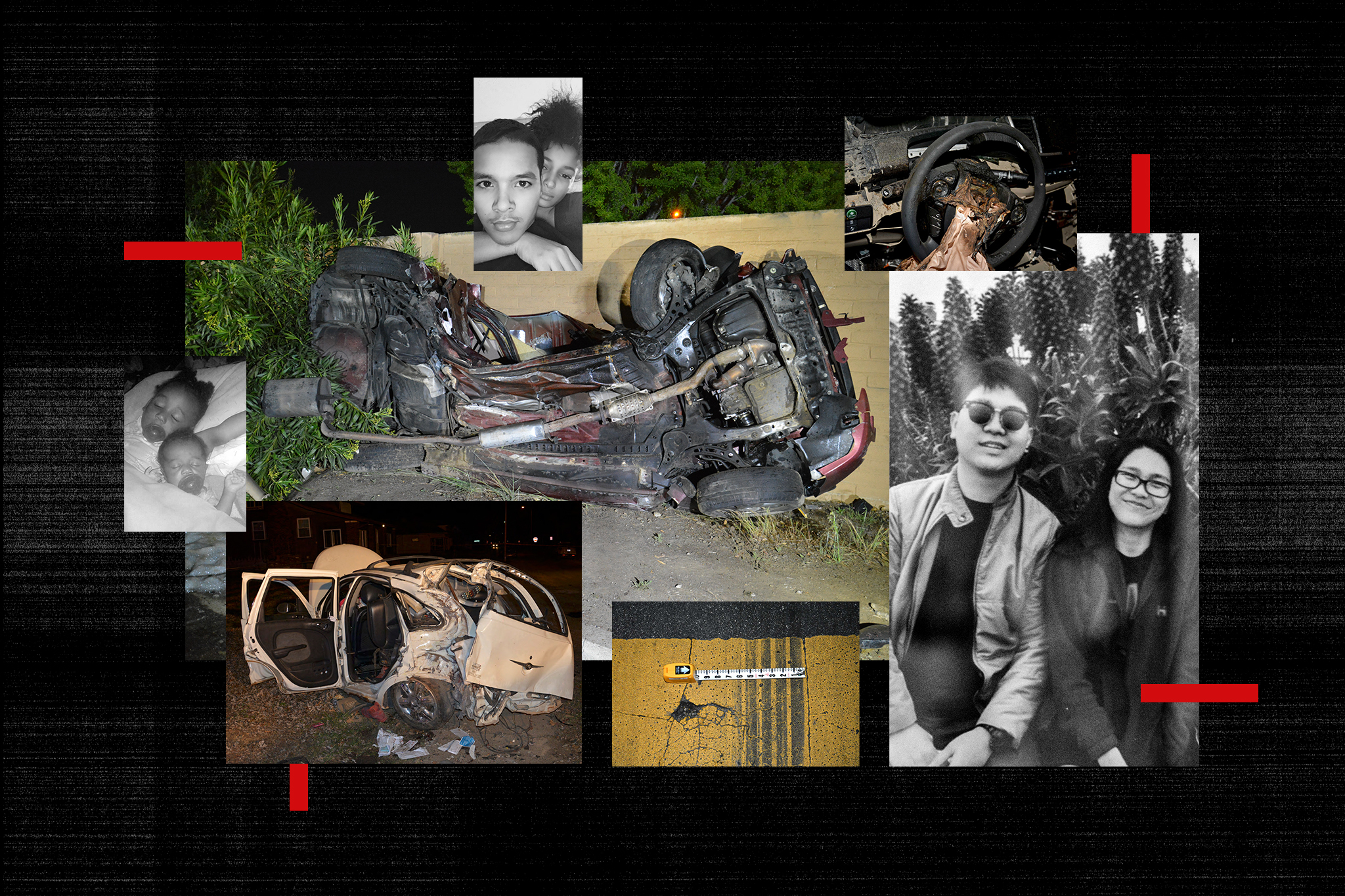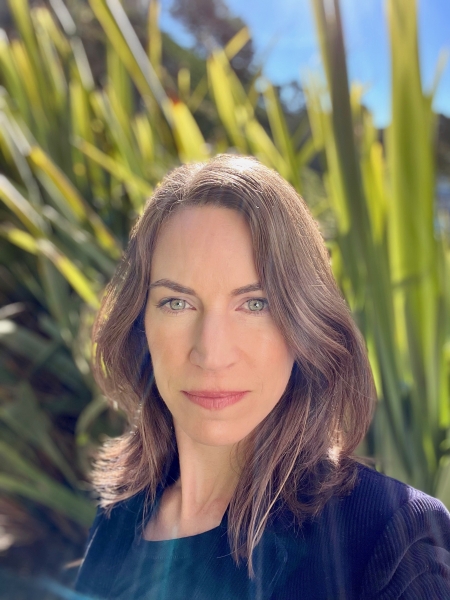San Francisco Chronicle wins March Sidney for Exposing Rising Death Toll of Police Chases
Jennifer Gollan and Susie Neilson of the San Francisco Chronicle win the March Sidney Award for “Fast and Fatal,” a yearlong investigation that found that police pursuits now claim nearly two lives a day across the country.
Officers routinely launch high-speed chases for low-level crimes, or sometimes for no crime at all. Departments often have permissive rules, and officers are shielded from punishment in most cases by qualified immunity. Officers rarely face serious consequences for chases that end in tragedy, even when their behavior is clearly negligent. And victims have a very difficult time seeking justice.
The federal government does not even track all the deaths. The Chronicle discovered that at least 3,336 people were killed in police chases between 2017 and 2022 and more than 52,000 people were injured.
Law enforcement’s assumption is that any suspect who’d flee must be wanted for a serious crime, but the data show that people flee for more mundane reasons like having a suspended license or being on probation.
Janae Carter, Terence Barker and their two young children were rammed at 74 mph by a man fleeing the police in Evansville, Ind. in 2017. The police were stunned to realize that the ruined vehicle was not their suspect’s: “This is not the car? Oh, dammit!” Carter was the only survivor.
“This is an old school investigative deep dive,” said Sidney judge Lindsay Beyerstein. “There has been a decades-long push for reform, yet little change. This is a nationwide epidemic of needless tragedies that public officials are failing to confront.”
Jennifer Gollan is an investigative reporter at the San Francisco Chronicle. Investigations she led have prompted sweeping changes in federal law and new state legislation, and received various honors, including an Emmy Award, a Hillman Prize, and the Robert F. Kennedy Journalism Award.
Susie Neilson is a data and investigative reporter for the San Francisco Chronicle. Her work has spurred inquiries by federal and state elected officials and earned awards from organizations including the Online Journalism Association and the Native American Journalists’ Association.

Backstory
Q: How did you become interested in the risks of police chases?
JG: We hit upon the idea of investigating fatal police pursuits after reading a few spot news stories, including one about an officer in Louisiana who hit and killed two teenage girls. After some cursory reporting, we found we could advance the story by revealing the scope of these deaths across the nation and how rarely officers face consequences for them, as well as the resulting devastation for families.
Q: What accounts for the recent uptick in deadly police chases?
SN: During our reporting, we discovered that the staggering death toll tied to police pursuits stems from decades of inaction by the federal government, specifically by regulatory agencies and lawmakers.
Overall traffic fatalities rose over the last decade, and spiked during the pandemic, though experts are still piecing together why. Some blame COVID-related social stressors, while others suggest that emptier roadways lead drivers to travel faster, something traffic experts call the “speed effect.”
Police shootings have also climbed since 2015. So it’s not just pursuit-related deaths that are rising in the arena of law enforcement. But criminal justice scholars are not exactly sure why fatal police encounters are increasing. It’s certainly a topic for further research.
Q: Give us an overview of your approach to this investigation.
JG: At the outset, we pieced together preliminary findings using documents, data and interviews. It quickly became clear that police often initiate chases over minor infractions and that officers who harm people are rarely held accountable. Local governments frequently paid million-dollar settlements after police hurt or killed people during chases. And while statistics showed that the death toll related to pursuits had soared to record highs, we learned the federal government did not track all of these deaths. So we decided to do it.
We built a first-of-its-kind database of fatal pursuits by drawing on data from research organizations, the federal government and our own digging. We filed more than 250 federal and state-level public records requests, obtaining thousands of pages of police reports, body and dash camera videos, and medical examiner reports. We gathered thousands of pages of court documents, depositions and financial reports on settlements between government agencies and people harmed by pursuits. And we requested criminal and disciplinary information for more than 150 officers from police agencies and prosecutors. We found that more than 3,300 people died because of police pursuits from 2017 through 2022 — the most thorough accounting of these deaths to date. Additionally, we approached sources shattered by the loss of their loved ones. We centered their powerful accounts in our reporting. We triangulated material from interviews, court documents, police reports and depositions to help us hold specific people and agencies accountable for the harm resulting from fatal police chases. Ultimately, we made the database we had built available to the public.
We teamed up with colleagues, in particular Guy Wathen, who analyzed and edited hours upon hours of dash and body camera videos that showed the grim toll of pursuits that began over low-level, non-violent infractions. These videos shaped our storytelling in fundamental ways.
Our team for the pursuits project drew on the talent of colleagues from across the newsroom – photographers, graphics reporters, data reporters and editors and designers. Video editing and analysis: Guy Wathen. Visuals: Stephen Lam, Jon Cherry, Liz Sanders and Brittany Greeson. Editing: Lisa Gartner, Jesse Marx, Dan Kopf, Demian Bulwa and Emilio Garcia-Ruiz. Visuals editing: Nicole Frugé. Video production: Daymond Gascon. Icons: John Blanchard. Design: the late Danielle Mollette-Parks. Design and development: Alex K. Fong and Sophie D’Amato Additional development: Danielle Rindler and Janie Haseman. Data visualization: Nami Sumida. Copy editing: Michael Mayer.
Q: What is qualified immunity and why is it an impediment to holding officers responsible for lethal crashes?
SN: Qualified immunity has existed in its current form since 1982, when the Supreme Court ruled that public officials could be sued for civil rights violations only if their conduct “violate(d) clearly established statutory or constitutional rights of which a reasonable person would have known.”
The doctrine has attracted controversy in recent years, largely because for a plaintiff to overcome it, the Court requires proof the officer violated a “clearly established” civil right. To do that, the plaintiff must show that a court has found an officer violated someone’s rights in a virtually identical prior case. It’s an extremely difficult standard to meet.
Other court precedents related to qualified immunity add to the legal hurdles families face. For instance, the Supreme Court has ruled that because pursuits involve split-second decisions, a police officer can’t violate an individual’s civil rights unless an attorney can prove the officer deliberately set out to harm that person. Because of this, it’s almost impossible for families of bystanders killed in police pursuits to sue the responsible officer for violating their civil rights.
Q: You mention that many police departments have embraced a “warrior mentality.” What does that mean and how does that affect their interactions with the public?
JG: Over the last few decades, a growing number of officers have adopted what law enforcement experts call a “warrior mentality,” hardening their determination to catch suspects. Whereas many police used to consider themselves guardians or protectors, now they think of themselves as “warriors” who fight crime. In the context of pursuits, this cultural shift is key because many officers work for agencies with discretionary policies that leave it to officers to decide whether to initiate a pursuit. This may help explain why some officers in our dataset pursued people over low-level, non violent offenses.
Q: Did anything unexpected happen during this investigation?
JG: As with many investigations, we often encountered foot-dragging when it came to the release of public records. But we kept negotiating and gained access to hundreds of dash and body camera videos which helped us hold individual officers accountable for their roles in deadly pursuits. We discovered that no one keeps track of all the people killed in police pursuits. So we devised a novel — if arduous and time-consuming — way to identify victims killed in police chases. We culled preliminary data from Fatal Encounters, Mapping Police Violence and developed a creative way to produce a thorough accounting of fatal police pursuits.
Q: What did you learn from reporting this story that you’ll carry forward to your next assignment?
SN: One thing we learned from this experience was the importance of collaborating early and often with our brilliant multimedia and developer teams. Their efforts to integrate video and graphics into the story in a powerful yet sensitive way elevated the stories of the families we shared, and their work was instrumental in making the data we collected accessible and shareable. Local news outlets across the country have begun using our data to examine pursuit deaths in their regions, which we are excited about.
We will continue to report on police chases throughout the year, building on our findings from these initial stories. If you’re interested in this work, please follow along — and subscribe to the Chronicle. Our team is committed to producing in-depth work that spurs real change.



